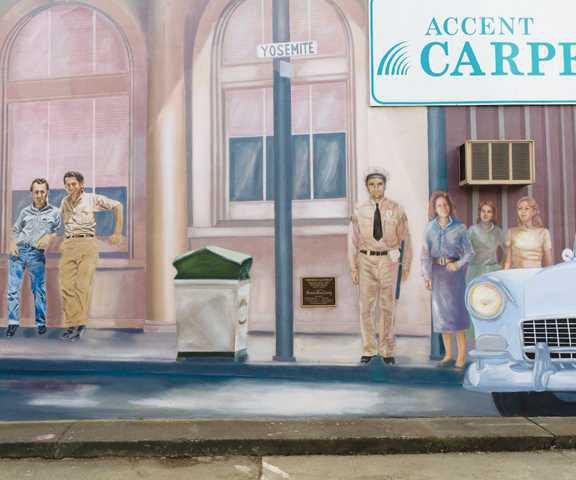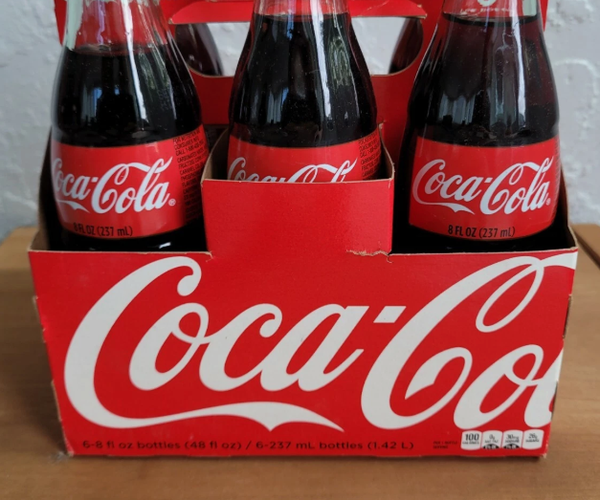Back in 1974 when PG&E was cheaper than dirt, the Central Valley had a heat wave.
Nothing unusual about that.
This is not the first rodeo for consecutive 105 degree plus days in California’s heartland.
I was 18 at the time.
I had to go to Yuba City to the office of the publisher at the Independent Herald.
I was working for the Wheatland News.
The publisher was in charge of a candidate’s campaign for Yuba County sheriff.
I was supposed to pick up an ad to run in the Wheatland News.
When I arrived, I was directed to the publisher’s office where I would end up cooling my heels for close to 30 minutes until he got back from a meeting.
A little bit of more background.
It was mid-afternoon. The high that day was forecasted to reach 108 degrees.
I was wearing a three-piece suit, complete with the prerequisite necktie.
After a few minutes I started to get cold.
I got up and walked around and happened to notice a thermostat.
It read 62 degrees.
A few minutes later the publisher showed up, gave me the ad, and I left.
I was driving a 1967 Mercury Cougar at the time. It had leather seats and a dark simulated wood steering wheel.
It was parked on the street about 50 feet from the front door.
The windows were rolled up.
It had been sitting in the relentless sun for almost an hour.
The National Weather Service notes the air in a car with the windows rolled up can increase 40 degrees on a hot day.
But that is nothing compared to a seat or other car components such as the dashboard or steering wheel that experts say can get as hot as 180 to 200 degrees within an hour without much effort.
I got in the car, rolled down the windows, started it up, and pulled out of the parking space.
Two blocks away I started to feel dizzy and a bit faint. I also was starting to get six to my stomach.
I pulled over.
The reason was abundantly clear.
My body had gone through a rather major shock going from 62 degrees to something north of 120 degrees in less than a minute.
That is the day I decided it might be wise to eschew air conditioning whenever I could,
And as the years unfolded I took the tact instead of fighting the heat to embrace it instead with a caveat.
The caveat was provided by my grandmother.
Having been abandoned by her husband and left to raise seven kids on a working cattle ranch in the rolling foothills of western Nevada County without indoor plumbing and few electrical items beyond a few lights, she knew how to cope with the hand she was dealt including the heat as well as the cold.
It was simple. Learn to live with it and be smart doing it.
It explains why I was out for a jog/walk Wednesday at 1:30 p.m. when the mercury hit 105 degrees.
That sounds crazy but it was a course of action that former Manteca Fire Chief Kirk Waters once shared he did as well.
He was in the habit going on a run in the heat of the afternoon even if it was over 100 degrees.
His rationale?
If you condition your body to the worst part of the day in terms of heat, you will be better equipped to handle severe situations.
And now there is school of thought from researchers who are tripping over each other to issue projected body bag counts that “extreme heat emergencies” may produce in a bid to give further urgency to specific policy proposals climate change.
The bottom line: People have become so acclimated to air conditioning in their residences and workplace that it essentially is making more people vulnerable during power outages experts are projecting as more and more heat waves occur.
The experts believe it is an ironic twist.
Assuming they are right about more heat waves and air conditioning becoming a deadly crutch, the real irony is people have basically been set up for the role of the proverbial lambs for the slaughter by the hardcore wing of the environmental movement.
One of the worst examples, if you can call it that, are California’s energy standards for residential construction.
They have put energy efficiency standards in place that have led to tract homes and such becoming sealed boxes.
The days when homes were situated and built to take advantage of prevailing breezes and yards had plenty of large shade trees instead on non-native water absorbing eye-candy grass are long gone.
Trees, planted right in urban settings, can lower the air temperature beneath them by up to 10 degrees. The ground temperatures plummet even lower.
The radiant heat stored and thrown off by stucco tract homes jammed like sardines in subdivisions as well as solid cement driveways and massive RV parking slab are huge factors in creating the urban heat effect.
The urban heat effect essentially supercharges the impact of heat waves.
It is a simple truth.
But because all of the hysteria being whipped up that has made reducing or eliminating greenhouse gas emissions as the absolute No. 1 priority to deal with in terms of climate change, we are not addressing low hanging fruit that can be a quicker and a longer lasting buffer against climate change.
Front and backyards with trees that grow fast and can cool such as California pepper trees can change the negative heat dynamics of a home.
So can pavers intermixed with squares of low-growth ground cover or even some grasses used in driveways instead of continues pours of concrete.
They also have the added bonus of reducing run-off by reducing the amount of impervious surface creates. As such, it reduces the potential for flooding.
Little changes can make a difference.
But we’re focused on the big changes that are much more problematic to make and often end up with a major negative impact on lifestyle and pocketbooks while producing minuscule positive gains.
How we adapt on a one-on-one basis to our surroundings will have a snowball effect on climate conditions.
Most who have lived the bulk of their lives in the Central Valley tend to be significantly more acclimated to valley heat than those who have moved here in recent years from the cooler coastal areas.
Adapting and acclimating to situations Mother Nature has created is the most effective way from a result and cost standpoint to soften the impact of climate change that will continue to happen even if every human on earth moved to Mars.
It is also healthier if your goal isn’t to create a 72-degree environment per se but to find ways to blunt extremes without creating an artificial and ultimately unsustainable artificial environment.
This column is the opinion of editor, Dennis Wyatt, and does not necessarily represent the opinions of The Bulletin or 209 Multimedia. He can be reached at dwyatt@mantecabulletin.com






